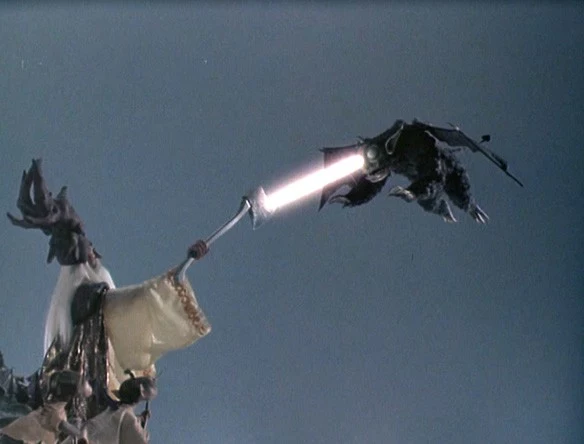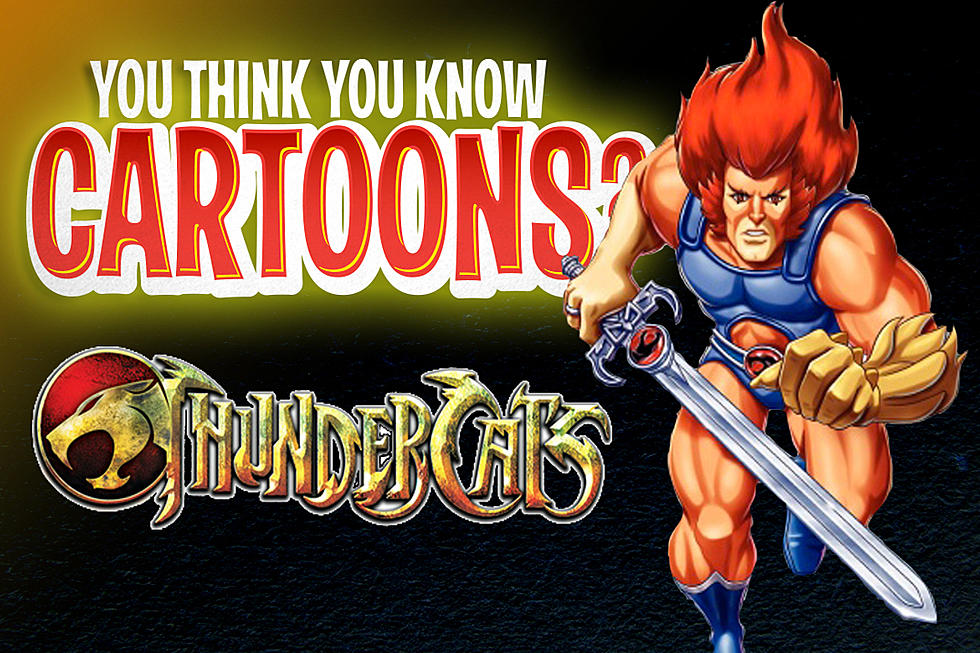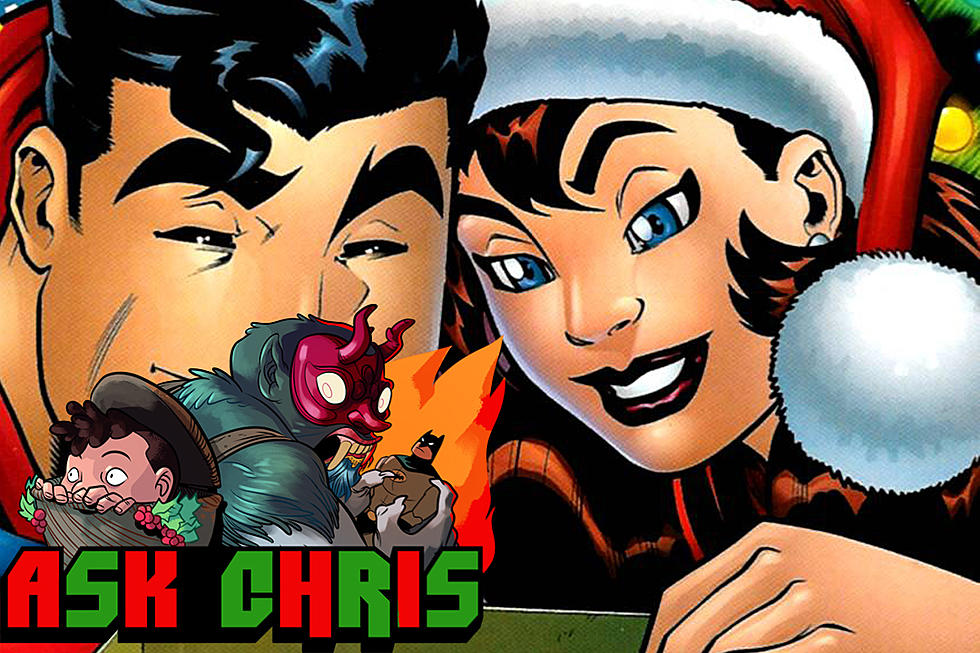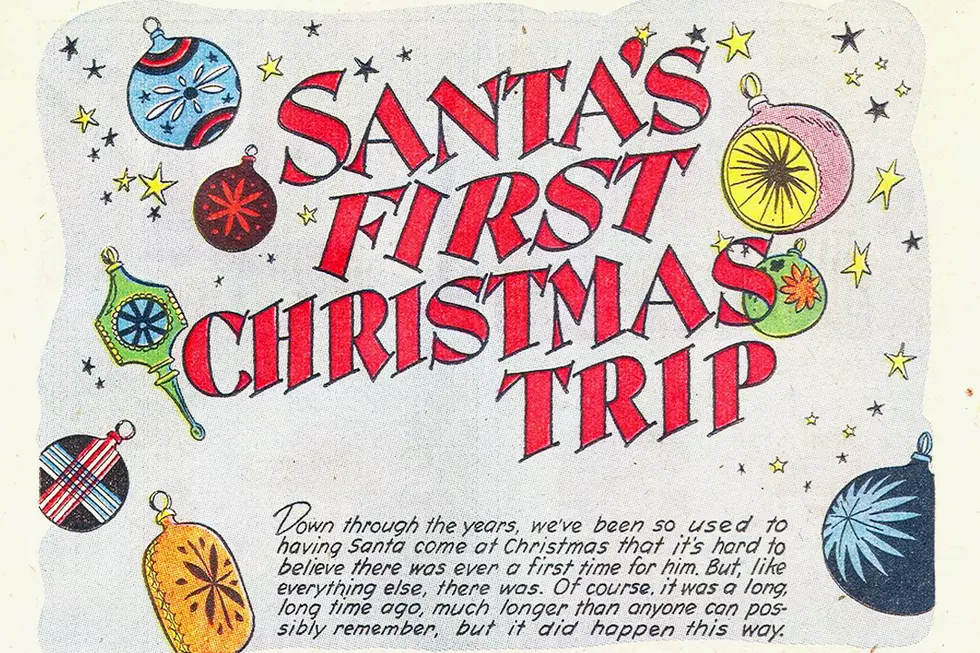
Ask Chris #87: The Santa Claus of Two Worlds
Here at ComicsAlliance, we value our readership and are always open to what the masses of Internet readers have to say. That's why every week, Senior Writer Chris Sims puts his comics culture knowledge to the test as he responds to your reader questions!

Q: What is the best media representation of Santa Claus's origin? -- @pbarb
A: I'll be honest with you, folks: I love Santa Claus almost as much as I love Batman. In fact, I'm pretty sure the only reason the Caped Crusader gets the edge over Jolly Old St. Nick is that nobody's out there publishing five monthly comics about his continuing adventures. As a result of that egregious oversight, I'm not as familiar with Santa's various origins as I probably should be. There are, however, two origins for Santa Claus that I like an awful lot, despite the fact that they're so different from each other that they could almost be about two completely unrelated characters.
And the weird thing is, they were both produced by the same people.I'm referring of course to Arthur Rankin and Jules Bass, the two men who founded the company that produced all those stop-motion TV specials that have been airing at Christmastime for the past fifty years. Some people swear by Rudolph and I even know a couple of people that have a surprising attachment to Cricket on the Hearth, but for me, it's always been about the big man himself. Seriously, to this day, The Year Without a Santa Claus gets me every time. When Santa gets that letter from the little girl about how it's okay if he doesn't bring her presents this year because she knows he loves all the children of the world and that's what really maters? It just...
Sorry, it's... It's a little dusty in here. Ahem.
For an origin, however, their most famous offering had to be 1970's Santa Claus Is Comin' To Town.

It's definitely one of the most popular Rankin/Bass specials, and in a lot of ways, it's the definitive story of Who Santa Is and How He Came To Be. And with good reason: It pretty much has everything you want to see from a story about how Santa Claus got started. You find out why he's a toymaker, why he had to go live at the North Pole, how he met his wife, why he's sometimes called Kris Kringle, and so on for 55 minutes plus commercials. And that's the fun of it: It takes a lot of the common imagery about Santa Claus that we get from songs and Coca-Cola ads and uses it to build a narrative that hangs together pretty well.
In fact, more than anything else, it reminds me of a Geoff Johns comic. That's not a knock on Johns or on Comin' To Town, either; they both have that same desire to take tiny details about the character and give them this huge amount of added significance. In Johns comics, the Flash doesn't just wear a bow-tie because he likes bow-ties, he wears it because his mother gave him one right before he died. Meanwhile, Santa Claus isn't just some dude who likes red, he wears it because it's the traditional costume of the Kringle elves that was handed down to him by Tanta Kringle when he was accepted as a Master Toymaker. Throw in a Kryptonian crest or two, and that guy would be right at home in the modern DC Universe.
Especially when it goes a little dark, like the scene where the soldiers in Sombertown start kicking down the doors to people's houses to look for toys like it's the opening scene of Inglourious Basterds:

I have to say, Burgermeister Meisterburger is a fantastic villain for Santa Claus, too. The idea of making Santa a Robin Hood-esque outlaw -- a renegade toymaker operating outside the law! -- is a pretty cool one to begin with, and a guy who hates toys so much he had them outlawed is the perfect foil. He's everything Santa isn't: selfish, bitter, angry, obsessed with outward appearances rather than the true person beneath, and ready to believe only the worst about the people around him.
It's that last one that sets up the contrast, especially when it's set against the single best scene in the special. Santa Claus double-checking his list of children to see who's been naughty and who's been nice and then smiling and saying, "Well, they're all pretty nice" is such a perfect moment. It encapsulates exactly what's so beautiful about Santa Claus -- it's not about the toys, or even the tacit bribery of "if you don't pout and cry, you'll get a reward." It's about the belief that there's good in everyone that deserves to be celebrated. It's such a great little piece of optimism, and it's delivered with such simple purity that it's stuck with me ever since I was a kid. It's probably a pretty big part of why I love Christmas so much today.
But those are the real strengths of the Rankin/Bass specials, both in their ability to hit those pure moments and in the way that they add neat stuff to the mythology. There was, for instance, no mention of legendary yeti-fighter Yukon Cornelius in the song "Rudolph the Red-Nosed Reindeer," but he's totally there in the special. And in Santa Claus is Comin' to Town, in addition to the Burgermeister, we also got the Winter Warlock:

Another great character, both in content and in being one of the best designs they ever did. It's no wonder that after teaching Santa Claus how to spy on children using a magic snowball that he went on to a long career menacing Finn and Jake in the Land of Ooo.
Which brings us back to the explanations they give, not just for Santa, but for various other Christmas traditions as well. I'm particularly fond of their reasoning behind decorating a tree and putting presents underneath it. If you don't know, their story is that Santa Claus got married during the time that he was an outlaw, so rather than a Church, he just went out to the woods to have his wedding blessed by God directly, and fancied up a tree for the occasion, with his wedding gifts tucked underneath it. That might not have anything at all to do with the actual reason for the tradition, but honestly? It's pretty great, and it works just fine in my Santa-centric worldview.
Of course, for a special that opens with Fred Astaire promising to answer all of kids' questions about Santa Claus, there's an awful lot that it just doesn't bother with. For one thing, they kind of leave out just what the hell he was thinking when he gave those two kids on the right a large-caliber revolver and a Thompson submachine gun:

It seems like they back off from any of the more difficult questions. Of all the things they choose to explain, up to and including how the reindeer fly, they leave out pretty common questions like "how does he get around the world in one night?" Also, while it shows a pretty big passage of time from the vaguely German origin story to today and the downfall of the Meisterburgers at the hands of a peasant rebellion, it doesn't address the question of Santa's immortality.
For that, you have to go to the other Rankin/Bass origin story: The Life & Adventures of Santa Claus!

Life & Adventures, based on a book by Wizard of Oz author L. Frank Baum, was released in 1985 and was the last of the Rankin/Bass stop-motion specials. Because it was done after 20 years of figuring out their techniques, it looks beautiful compared with the rest, with incredible designs and far more expressive characters. It might seem like a small thing, but you can really see the attention to detail in the characters' hands. They look and move like actual hands, which is a tough trick to pull off.
Oddly enough, it's one of the more obscure specials, too. I don't remember seeing it at all when I was a kid, and while I'd heard of it for a while, it wasn't until I got it on DVD that I watched the whole thing. Even then, it's only available in one of those print-on-demand Warner Archive discs as a double-feature with Nestor the Long-Eared Christmas Donkey.
That said, it is awesome. And it definitely tells you a lot about Santa Claus, like how he was weaned on the milk of a lioness, raised by immortals who taught him to speak the language of birds, and learned of man's inhumanity to man by being astrally projected to Japan to watch children train to kill each other as samurai.
For some reason, none of that stuff got a mention in Comin' to Town. One thing they do have in common, though -- and just about the only thing -- is that Santa Claus enters the story as a foundling. In Life & Adventures, he just shows up one morning in the Forest of Burzee, and Comin' to Town implies that he has parents that we never see. Personally, I believe that Thomas and Martha Claus were walking down Crime Alley one night when a mugger stepped out of the shadows and demanded money to buy toys, but that's probably just me.
Despite the title, The Life & Adventures of Santa Claus is actually less about Santa than it is about this dude:

That is The Great Ak, Master Woodsman of the World. He is immortal. He is twelve feet tall.

And he has a magic silver axe that shoots lasers.

He is not a guy you want to mess around with.
The story of Life & Adventures focuses on Ak trying to convince all the other immortals -- the Commander of the Wind Demons, for example -- that Santa Claus should be the first mortal man to be granted immortality because... well, because he's Santa Claus. See, he's also the one who finds baby Santa Claus out in the woods one day and, because he's the Great Ak and does not give a stone cuss about what you think, he decides that it would be a great idea to just give that baby to Shiegra, a local lioness.
On the off chance that this ever comes up in your life: If you find a baby in the woods, do not give it to a lion. You will regret that decision.
Shiegra knows better than to cross Ak, however, and she gives Li'l Claus her milk until a wood nymph named Necile decides that she wants to raise Santa as her son, since immortals have no children of their own. Thus, Santa grows up, goes out into the world, and gets into making toys.
And then the demons that make children commit sins show up.

These are the Awgwas, and since Santa's making all the kids happy with his toys, they kidnap him, hold him prisoner, and steal a massive horde of wooden horses and dolls.
Oh son, you know what time it is now.

The Great Ak's great axe basically lays waste to the entire crew, and from there, you know the rest. Santa expands his toymaking operation, gets a set of reindeer -- all of whom have different names in Baum's version than the more popular bunch from "A Visit From St. Nicholas," including Ready, Steady, Feckless and Speckless -- and eventually gets his immortality so that he can hand out presents every Christmas.
And it's a good thing he does, because in Life & Adventures, Santa Claus created the Christmas tree because it was the only thing he had to set up as his own tombstone:

Like I said, it's awesome. In fact, it might be the only origin for Santa Claus that comes close to matching the actual origin of St. Nicholas of Myra, which involves resurrecting children that were quite literally butchered by a cannibal and slapping a heretic so hard that he had to organize a jailbreak with help from Mary.
So there you go, folks: Two vasty different origins for Santa Claus, as related through that most Christmasy medium, stop-motion animation. But whether you're a Mickeyroonian or a Baumite, the message of doing nice things for others remains the same. Merry Christmas, everybody!
That's all we have for this week, but if you've got a question you'd like to see Chris tackle in a future column, just send it to @theisb on Twitter with the hashtag #AskChris, or send an email to chris@comicsalliance.com with [Ask Chris] in the subject line!
More From ComicsAlliance





![Greetings From The Krampus: A Tale For Krampusnacht [Original Comic]](http://townsquare.media/site/622/files/2016/12/krampusnacht-header.png?w=980&q=75)


![Benito Cereno & Anthony Clark Bring You a True X-Mas Story of Poop Candy [Exclusive Comic]](http://townsquare.media/site/622/files/2011/12/tio00.jpg?w=980&q=75)
